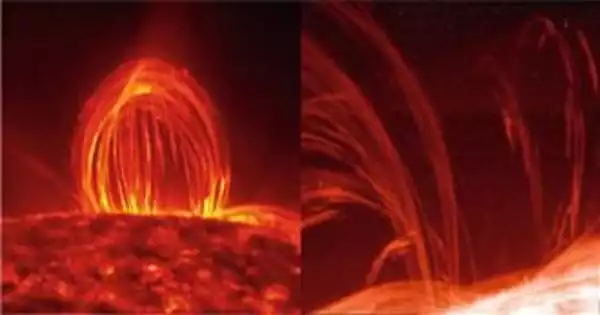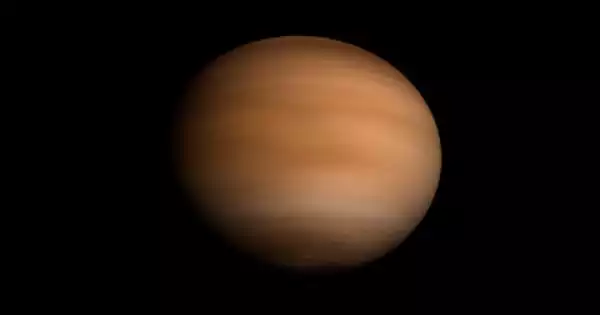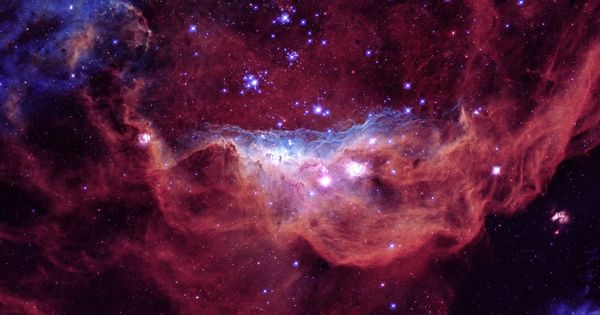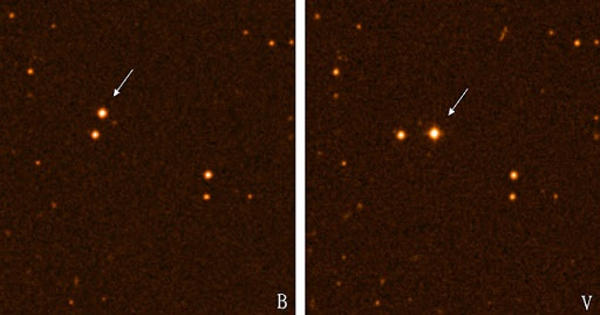Coronal loops, which are well-defined hot strands of plasma that arch out into the sun’s atmosphere, are well-known in solar photography. However, many of the ostensible coronal loops we perceive may not exist at all. According to a recent article that questions current beliefs about what we know and don’t know about the Sun, many coronal loops – ropey strands of plasma that scientists have long thought existed in the Sun’s atmosphere – may actually be optical illusions.
Some coronal loops may be caused by “wrinkles” of greater density in a plasma curtain known as the coronal veil. If confirmed, the discovery, which was prompted by unusual plasma formations discovered in computer simulations of the sun’s atmosphere, could transform how scientists measure some properties of our star.
“Seeing these complex structures is kind of inspirational,” says Markus Aschwanden, an astronomer at Lockheed Martin’s Solar & Astrophysics Lab in Palo Alto, Calif., who was not involved in the study. “They are very different from what we expected.”
Only in the last few years have scientists begun to gain a clearer grasp of the sun’s complicated atmosphere, or corona. Coronal loops have been used to quantify several corona parameters, such as temperature and density, and they may hold the key to understanding why the sun’s atmosphere is so much hotter than its surface. However, astronomers have long pondered how the loops appear so tidy when they begin on the sun’s chaotic surface.
The findings were mind-boggling. The conventional wisdom was that if we saw an arching coronal loop, it meant that there was a garden hose–like strand of plasma. The simulation’s structure was far more intricate, with complicated borders and a raggedy structure.
Anna Malanushenko
So Anna Malanushenko, a solar physicist, and her colleagues attempted to separate individual coronal loops in 3-D computer models initially designed to replicate the life cycle of a solar flare. The team expected to see neatly oriented strands of plasma because coronal loops appear to align themselves to the sun’s magnetic field, like metal shavings around a bar magnet.
Instead, the plasma looked like a curtain-like structure looping out from the surface of the sun and folding in on itself like a wrinkled sheet. Many of the alleged coronal loops in the simulation turned revealed to be fakes. While structures did exist along with the magnetic fields, they were neither thin nor compact as expected. They were more akin to smoke clouds. The shape and direction of the creases in the veil in the simulation altered as the researchers shifted the point of view from which they looked at them. And, from certain perspectives, the creases looked like coronal loops.
The findings were mind-boggling, according to Malanushenko of the National Center for Atmospheric Research in Boulder, Colorado. “The conventional wisdom was that if we saw an arching coronal loop, it meant that there was a garden hose–like strand of plasma.” The simulation’s structure was far more intricate, with complicated borders and a raggedy structure.
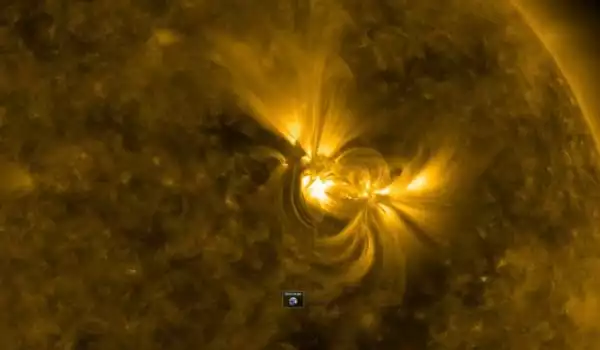
However, not all coronal loops are illusions under a coronal veil. “We don’t know which are real and which aren’t,” Malanushenko says. “And we must be able to tell in order to research the solar environment.”
It’s also not clear how the purported coronal veil might impact previous analyses of the solar atmosphere. “On one hand, this is depressing,” Malanushenko says of the way the new findings cast doubt on previous understandings. On the other hand, she finds the uncertainty exciting. Astronomers will need to develop a way to observe the veil and confirm its existence. “Whenever we develop new methods, we open the door for new knowledge.”
Challenging intuition
Images of the Sun obtained in the extreme ultraviolet light show what appear to be coronal loops. For physicists, the idea that they exist is a natural one because it fits our most basic knowledge of magnetism.
Most schoolchildren have witnessed what happens when iron filings are sprinkled near a bar magnet at some point. Magnetic field lines that loop from one pole of the bar magnet to the other orient the filings. These curved lines spread out, getting weaker and less dense as they get further away from the magnet.
The apparent coronal loops in images of the Sun look strikingly similar, and since there is a significant magnetic field in the Sun, the existence of magnetic field lines that could trap a rope of plasma between them and create loops seems like an obvious explanation. And in fact, the new study confirms that such loops likely exist.
However, based on our understanding of magnets, the coronal loops visible on the Sun have never behaved exactly as they should. For example, scientists would expect the magnetic field lines on the Sun to grow apart as you move higher in the corona, exactly as they did in the iron filings experiment. If this occurred, the trapped plasma between the field lines would also spread out between the borders, resulting in thicker, less brilliant loops. Images of the Sun, on the other hand, do not display this phenomenon. The loops further out, on the other hand, appear slender and dazzling.
The hypothesis that these loops are wrinkles in a coronal veil explains this and other anomalies with our predictions of the loops, but it also raises new issues. What, for example, governs the shape and thickness of the folds? And how many of the apparent loops in Sun photos are true strands, and how many are optical illusions?
“This study encourages us as scientists to always challenge our assumptions and that intuition can sometimes work against us,” Malanushenko added.
